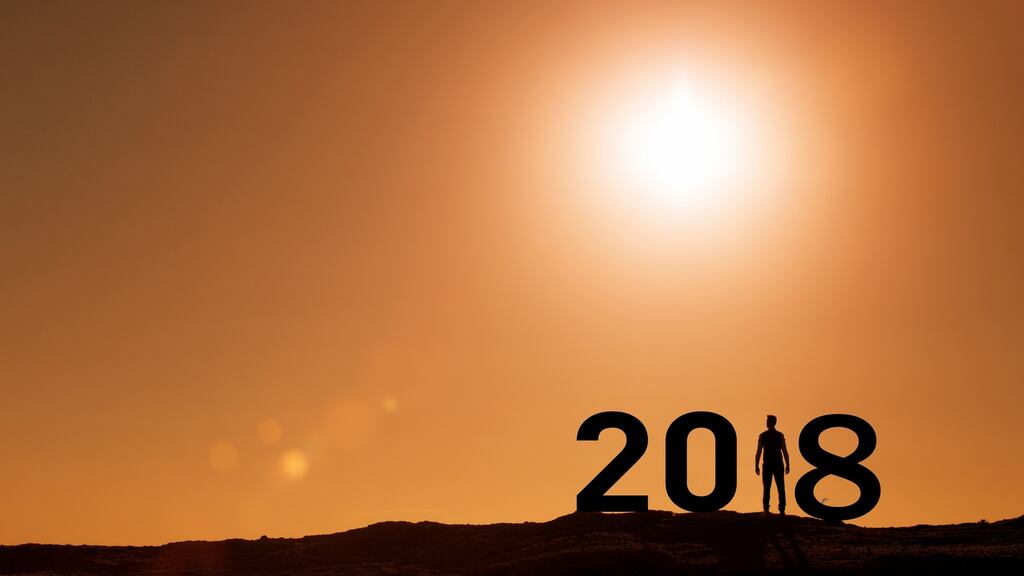The first days of January are a hazy affair. We awake after the collective appeasement of Christmas looking like Caravaggio's Sick Bacchus – grand enough from far away, but the closer you get to us, the more we look like we're riddled with something menacing and possibly immoral.
We feel ashamed of this inexplicably shiny-skinned, overindulged person we see in the mirror. There is a sense that we have disimproved. There must be a better self than the old one we have shrugged on with our consciousness every morning as far back as we can remember. If we are going to choose a time to change, surely this is it.
I have changed, no doubt like all of us. An opportunity to contemplate just how much has arisen. It is a cold day without interruption, and I have happened upon a box of old photographs and dug out each one carefully, a cupboard-scented treasure from the distant past, to examine it.
One of the pictures that has inexplicably slid between my ribs with a little twist is a slightly indecent photograph of my brother and me. I would have been two or three when it was taken, and he five or six. I appear, to put it indelicately, like a sort of overweight, grubby vagrant with blonde hair matted and mashed down after a particularly intense nap.
We are in the front garden of the rented house we lived in when I was born and I am wearing what appears to be some sort of hideous beige two-piece affair, with the bottom two buttons of the cardigan open to allow my substantial gut (clad in a white T-shirt) to bloom forward. Clearly, I had indeed just awoken from a nap. Usually, my mother took pride in keeping us neat and presentable, so I can only presume now that this photograph was taken in humour, and rather at my expense. My brother, looking sweet-faced and sandy haired in a striped T-shirt and a bizarre par of blue trousers that make him look like a tiny mechanic at work, holds my hand, doubtless by force. There we are together, photographed probably by my mother, though I don’t remember.
If the baby in the photo weren’t me, I would find her squat, plump little form, dishevelled appearance and cobby limbs endearing. Since she is me, however, I sit on the floor next to the box, squinting uncertainly at her squashed, puggish little face, trying to draw a connection from the tiny, orcish little person in the photograph to the me who sits here now. What makes the baby in the photo me? I can’t remember her. It isn’t likely that I think or feel in any way similarly to the way she did in any respect. Certainly, if I consider carefully, I can trace (at least some of) the series of events, one abutting the other, that leads from her to me, but we are clearly not the same. Not even at a cellular level, for if I consider the body I inhabit now, it has very little in common with hers.
So much change is involuntary, or unconscious, but through it all, we presume that there is a “me”; an immutable “self” who remains intact regardless of the changes that occur. However, this idea is a slippery one, and is like grabbing sand. The harder you attempt to clarify what that “me” is, the faster it slips out of awareness. If I have an accident and lose my long-term memory, am I still “me”? Or if I develop psychosis and cannot determine fiction from reality? Clearly, my “me”-ness is not dependent on my body, for we take for granted that I was “me” in that photo and am still the same “me” now, despite no longer awaking mid-afternoon looking like a trucker who hasn’t taken a break in three days and washes with baby wipes in the cab of his truck.
New Year’s resolutions my foot. How can we consciously change if we can’t even grasp who “me” is . . . are? It has been a long winter. I put the photo back in the box. At least, I think “I” do. Now feels like a good time to make hot chocolate – no doubt the baby in the photo would have approved.











